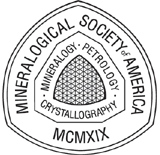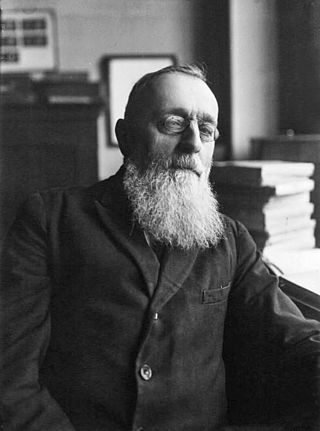
Antoine François Alfred Lacroix was a French mineralogist and geologist. He was born in Mâcon, Saône-et-Loire.
Founded in 1958, the International Mineralogical Association (IMA) is an international group of 40 national societies. The goal is to promote the science of mineralogy and to standardize the nomenclature of the 5000 plus known mineral species. The IMA is affiliated with the International Union of Geological Sciences (IUGS).

Alexander Evgenyevich Fersman was a prominent Soviet Russian geochemist and mineralogist, and a member of the Soviet Academy of Sciences (1919–1945).
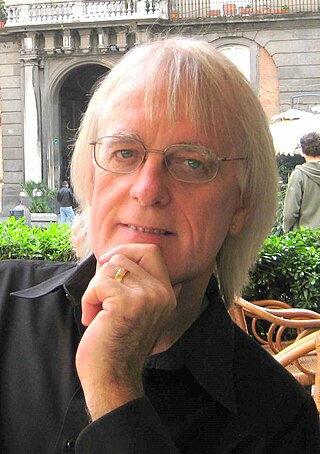
Frank Christopher Hawthorne is a Canadian mineralogist, crystallographer and spectroscopist. He works at the University of Manitoba, Winnipeg, Manitoba, Canada, and is currently Distinguished Professor Emeritus. By combining Graph Theory, Bond-Valence Theory and the moments approach to the electronic energy density of solids he has developed Bond Topology as a rigorous approach to understanding the atomic arrangements, chemical compositions and paragenesis of complex oxide and oxysalt minerals.
Leonard James Spencer CBE FRS was a British geologist. He was an Honorary member of the Royal Geological Society of Cornwall, and also a recipient of its Bolitho Medal. He was president of the Mineralogical Society of Great Britain and Ireland from 1936 to 1939. In mineralogy Spencer was an original investigator who described several new minerals, including miersite, tarbuttite and parahopeite. He also did important work as a curator, editor and bibliographer. He was the third person to receive the Roebling Medal, the highest award of the Mineralogical Society of America. He wrote at least 146 articles for the Encyclopædia Britannica Eleventh Edition.
W. Gary Ernst is an American geologist specializing in petrology and geochemistry. He currently is the Benjamin M. Page Professor Emeritus in Stanford University's department of geological sciences.

The Geochemical Society is a nonprofit scientific organization founded to encourage the application of chemistry to solve problems involving geology and cosmology. The society promotes understanding of geochemistry through the annual Goldschmidt Conference, publication of a peer-reviewed journal and electronic newsletter, awards programs recognizing significant accomplishments in the field, and student development programs. The society's offices are located on the campus of the Carnegie Institution for Science in Washington, DC.
Julian Royce Goldsmith (1918–1999) was a mineralogist and geochemist at the University of Chicago. Goldsmith, along with colleague Fritz Laves, first defined the crystallographic polymorphism of alkali feldspar. Goldsmith also experimented on the temperature dependence of the solid solution between calcite and dolomite. Goldsmith's research also led him to experiment with the determination of the stability of intermediate structural states of albite. For his outstanding contributions to the study of mineralogy and geochemistry, Goldsmith was awarded the prestigious Roebling Medal by the Mineralogical Society of America in 1988. The mineral julgoldite was named for him.
The Russian Mineralogical Society (RMS) is a public scientific organization uniting specialists and scientific groups working in the field of mineralogy and adjacent sciences. RMS was founded in 1817 Saint Petersburg, Russia, and is the world oldest mineralogical society among present. From 1869 until nowadays its residence is the Saint Petersburg Mining Institute.
American Mineralogist: An International Journal of Earth and Planetary Materials is a peer-reviewed scientific journal covering the general fields of mineralogy, crystallography, geochemistry, and petrology. It is an official journal of the Mineralogical Society of America, publishing both subscription and open access articles. The journal is a hybrid open-access journal. The editors-in-chief are Hongwu Xu, and Don Baker.
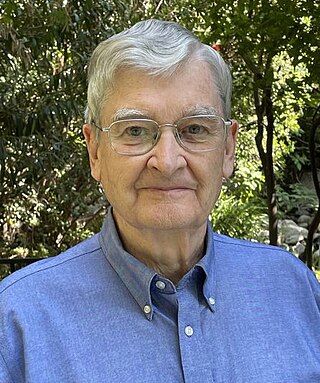
George R. Rossman is an American mineralogist and the Professor of Mineralogy at the California Institute of Technology.
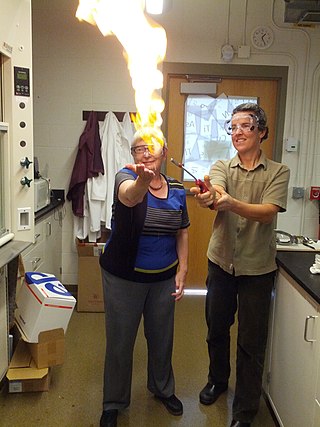
Alexandra Navrotsky is a physical chemist in the field of nanogeoscience. She is an elected member of the United States National Academy of Sciences (NAS) and the American Philosophical Society (APS). She was a board member of the Earth Sciences and Resources division of the NAS from 1995 until 2000. In 2005, she was awarded the Urey Medal, by the European Association of Geochemistry. In 2006, she was awarded the Harry H. Hess Medal, by the American Geophysical Union. She is currently the director of NEAT ORU, a primary program in nanogeoscience. She is distinguished professor at University of California, Davis.
Bernard (Bernie) Wood is a British geologist, and professor of mineralogy and senior research fellow at the University of Oxford. He specializes in the thermodynamics of geological systems, using experimental techniques. He is a prominent figure in the field of experimental petrology, having received multiple awards throughout his career and taught at several universities worldwide.

Sir Alexander Norman Halliday is a British geochemist and academic who is the Founding Dean of the Columbia Climate School, and Director of the Earth Institute at Columbia University. He joined the Earth Institute in April 2018, after spending more than a decade at the Department of Earth Sciences at the University of Oxford, during which time he was dean of science and engineering. He is also a professor of Earth and Environmental Sciences at Columbia University.
The Mineralogical Society of Great Britain and Ireland was founded in 1876. Its main purpose is to disseminate scientific knowledge of the Mineral Sciences (mineralogy) as it may be applied to the fields of crystallography, geochemistry, petrology, environmental science and economic geology. In support of this vision, the society publishes scientific journals, books and monographs. It also organizes and sponsors scientific meetings, and the society connects with other societies which have similar scientific interests. Some of these other societies are the International Mineralogical Association, the European Mineralogical Union, the Mineralogical Society of America, the Mineralogical Association of Canada, the Geological Society of London, IOM3, the North of England Institute of Mining and Mechanical Engineers and the Microbiology Society.
Daniela Rubatto is a Professor of geochemistry at the University of Bern, Switzerland. Her areas of interest and expertise are in isotope geochemistry, metamorphic petrology, mineralogy, tectonics, inorganic geochemistry, and geochronology.
Anat Shahar is a staff scientist at the Earth and Planets Laboratory, Carnegie Institution of Washington and adjunct professor at the University of Maryland. Her work uses high-pressure, high-temperature experiments and stable isotope geochemistry to understand the formation of planets in the Solar System.
Hans Peter Eugster was a Swiss-American geochemist, mineralogist, and petrologist.
Charles Thompson Prewitt was an American mineralogist and solid state chemist known for his work on structural chemistry of minerals and high-pressure chemistry.

Ikuo Kushiro MJA is a Japanese petrologist, known for his research in experimental petrology. His experiments on peridotites contributed significantly to the understanding of the formation of magma under mid-ocean ridges and island arcs.
